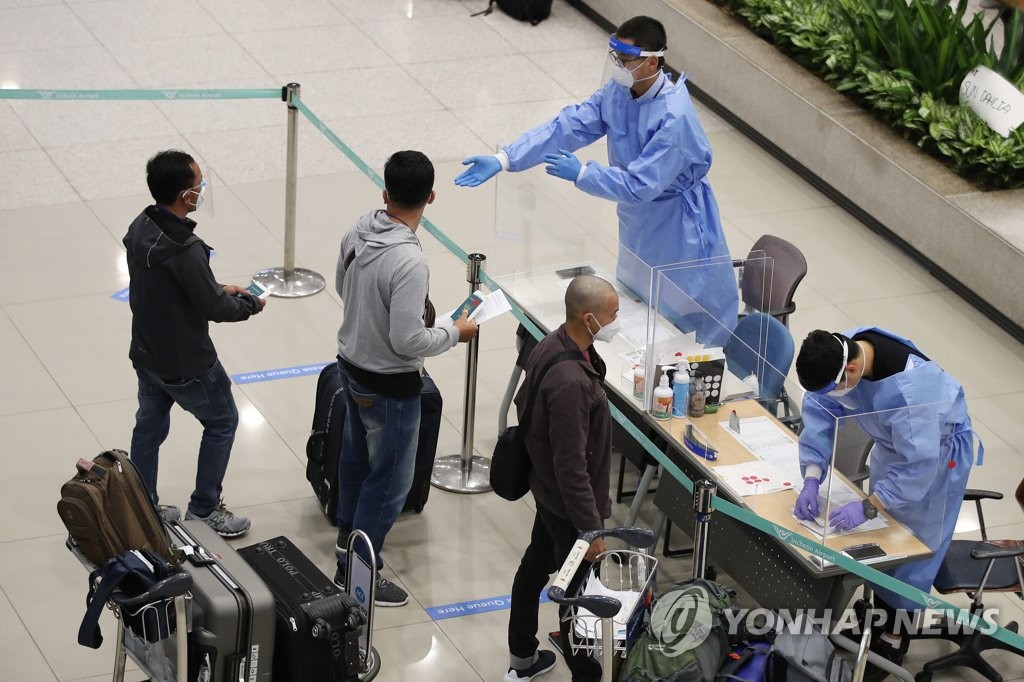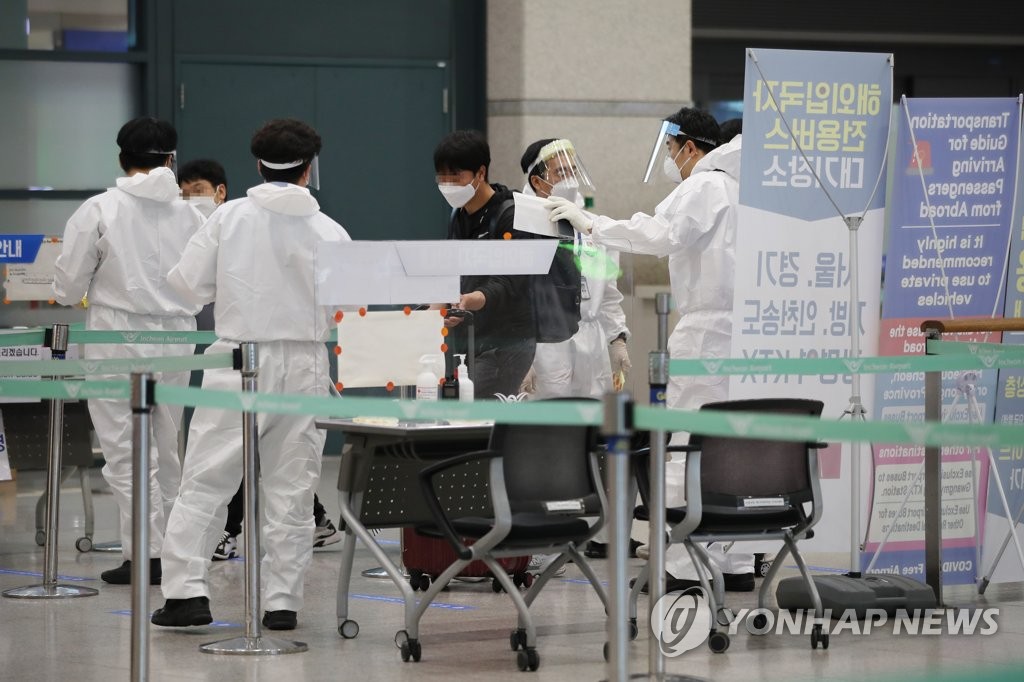- California Assembly OKs highest minimum wage in nation
- S. Korea unveils first graphic cigarette warnings
- US joins with South Korea, Japan in bid to deter North Korea
- LPGA golfer Chun In-gee finally back in action
- S. Korea won’t be top seed in final World Cup qualification round
- US men’s soccer misses 2nd straight Olympics
- US back on track in qualifying with 4-0 win over Guatemala
- High-intensity workout injuries spawn cottage industry
- CDC expands range of Zika mosquitoes into parts of Northeast
- Who knew? ‘The Walking Dead’ is helping families connect
New virus cases hover around 60; local infections at almost 3-week high
South Korea’s new daily virus cases stayed around 60 for the second straight day on Thursday as locally-transmitted cases spiked due to cluster infections traced to a military unit and nursing homes, with imported cases showing no sign of a letup.
The country identified 59 new cases, raising the total caseload to 13,938, according to the Korea Centers for Disease Control and Prevention (KCDC). Of the newly added cases, 39 were local infections, the highest in 18 days.
New virus cases jumped to 63 on Wednesday after falling below 30 for the first time in more than three weeks on Monday.



Airport workers check passengers at Incheon International Airport in Incheon, west of Seoul, on July 23, 2020. (Yonhap)
Of the locally transmitted cases reported Thursday, 11 were from Seoul.
A nursing home in western Seoul reported five new COVID-19 cases, raising the total number of related cases to 20.
A church located in southern Seoul reported 16 new infections, although not all of them were included in the daily tally.
Health authorities said the church did not follow social distancing guidelines, with its followers holding small-scale gatherings while not wearing masks.
Gyeonggi Province surrounding the capital city reported 17 new infections. At least 17 cases were traced to an Army unit in Pocheon, some 45 kilometers north of Seoul, as of Thursday.
Health authorities said the cluster infections at the military base seem to have originated from an outside instructor confirmed to have contracted the virus who visited the base, although further investigation is under way.
“We are still walking on thin ice in our fight against the virus,” KCDC Deputy Director Kwon Joon-wook said in a daily briefing. “We need to end the chain of infections in our communities over the summer vacation season.”
Gwangju, located 330 kilometers southwest of Seoul, added nine new cases. Incheon, just west of Seoul, added two new infections.
South Korea is also grappling with a steady inflow of cases from overseas, as imported cases have increased by double-digit daily figures for 28 consecutive days.
Of 20 imported cases reported on Thursday, nine of them were from the United States, followed by five from Russia and three from Uzbekistan.
All of the newly added patients from the U.S. on Thursday were American service members and their families.
The recent increase also came as South Korean workers returned home from virus-hit nations, such as Iraq. There were group infections on Russian ships docked in the southeastern port city of Busan and virus-infected foreign workers from Central Asian countries arrived at airports.
Health authorities said three additional Russian sailors aboard a ship docked in Busan tested positive for COVID-19 on Thursday. They were not included in the daily tally.
Over the past month, South Korea has detected 46 virus cases from seven Russian ships docked here.
South Korea has been requiring foreigners from six high-risk nations to hand in documentation showing they tested negative for the virus.
Related cases may rise down the road as the country plans to bring home nationals from virus-hit Iraq. The country is set to bring some South Korean nationals from Iraq on Friday on two chartered flights.
Among the first batch of 105 South Koreans who arrived here from Iraq on July 15, 45 tested positive for the virus after arriving.
But with the number of new locally transmitted cases staying below 50 recently, which is considered manageable by health authorities, South Korea decided to reopen museums and libraries in the greater Seoul area this week.
Bans on gatherings other than regular worship services by churches will be lifted on Friday as well.
South Korea added that it is currently keeping a watchful eye on the development of new vaccines around the globe.
“Even if treatments and vaccines for the new coronavirus are available, we are aware that there will still be difficulties in securing them due to competition with advanced nations or countries with drug manufacturers,” Kwon said.
The country’s death toll came to 297, unchanged from the previous day, according to the KCDC. The fatality rate reached 2.13 percent.
The number of patients fully cured of the virus reached 12,758, up 60 from Wednesday.
South Korea has been carrying out 1,500,854 COVID-19 tests since Jan. 3.











